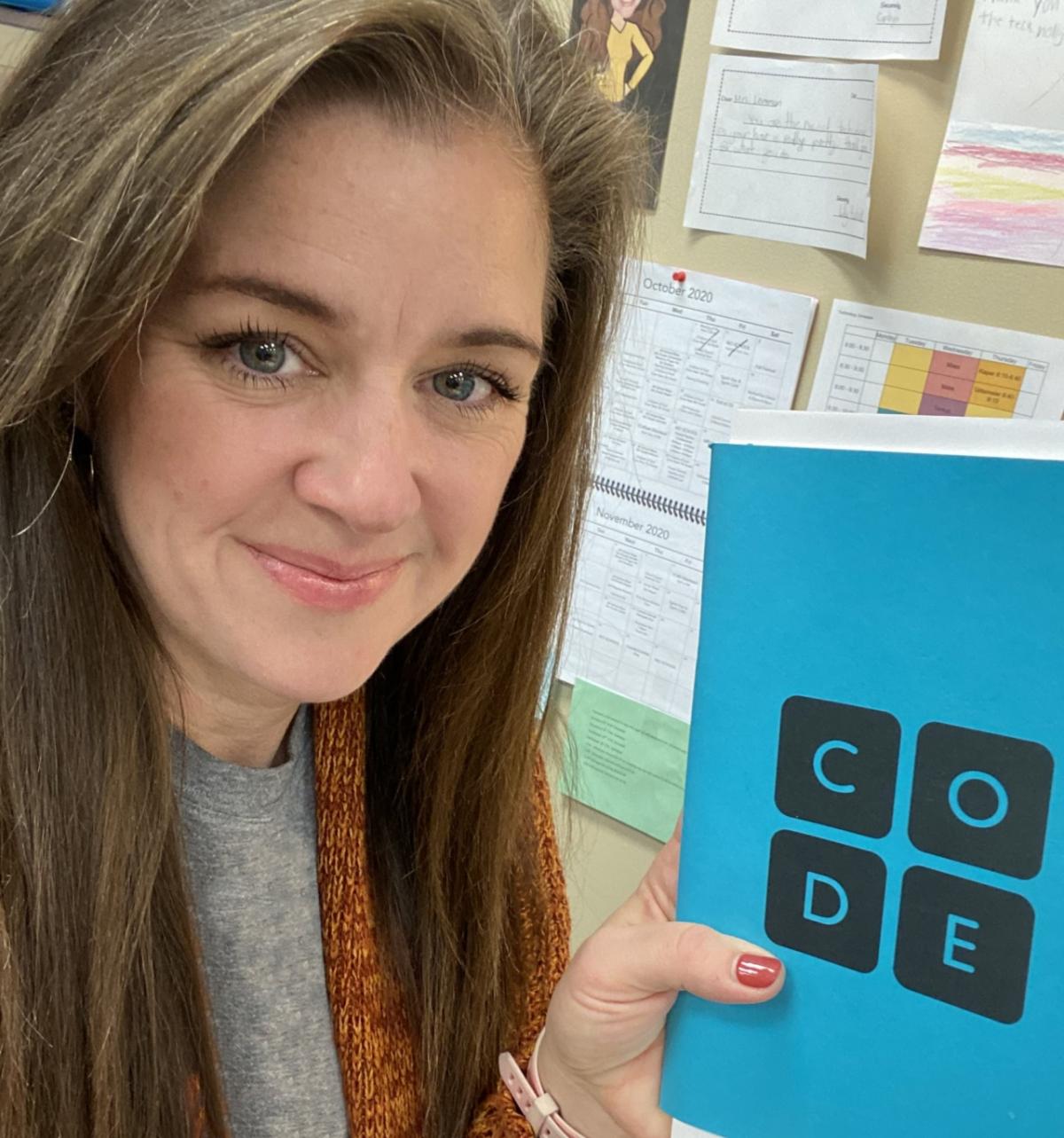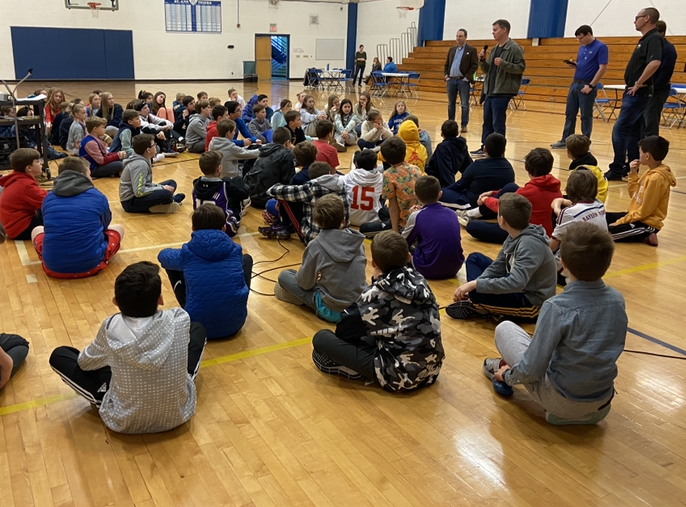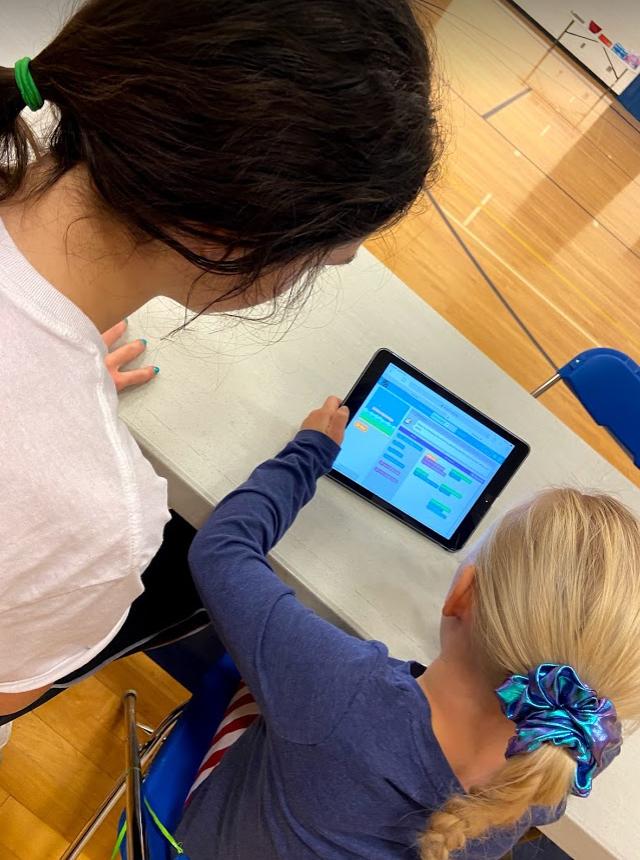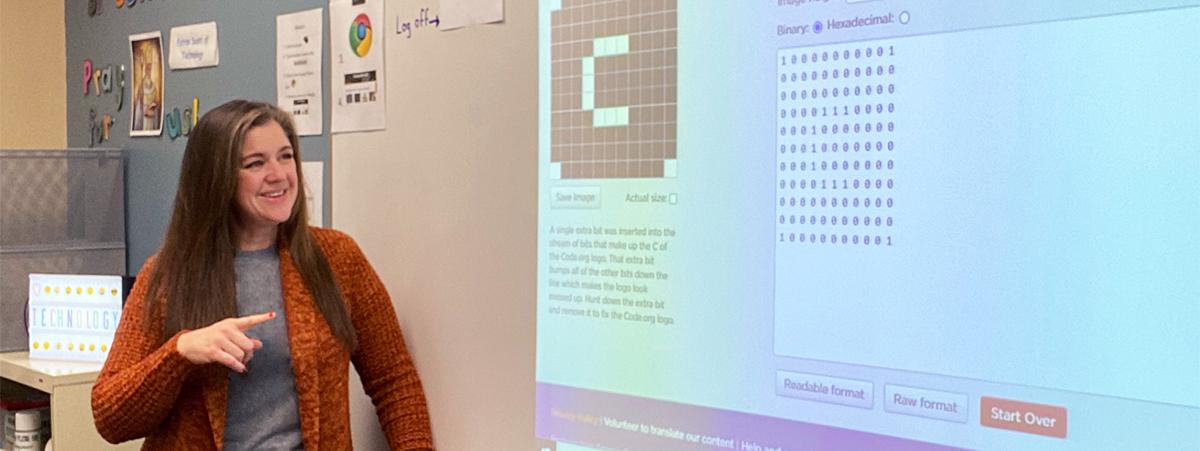Written in Her Code
How one K-8 technology teacher is making computer programming curriculum more accessible to her students
Ask Christine Lemmon where she’s meant to be, and she’ll tell you she’s exactly where she needs to be: standing in front of a classroom – or webcam – leading lessons on JavaScript, app design and digital citizenship for elementary and middle school students at a small parochial school in the Kansas City Metro Area.
“I have certain qualities and characteristics that are meant to serve the world,” she says. “We all do. So I’m cognizant that I want to pair those with something that feels fulfilling, that is needed, and that I can plug into with the unique set of talents and gifts I’ve been given. Teaching technology in the classroom utilizes those qualities in a perfect way.”
Through a grant from Koch Industries, Christine was able to attend a virtual training session on Computer Science principles conducted by Code.org, a nonprofit dedicated to making coding education and computer science more accessible to K-12 students. During an intensive 10-unit summer course, Christine learned how to teach the basics of coding and computer science – something she readily admits she’s continually learning herself. She also connected with other teachers who have similar goals.
“It gives a teacher so much confidence to be able to attend something like this,” she says. “I’m honest with my students. Sometimes I’m just two lessons ahead of them. I’m learning as I go, also. But to give us access to additional training and allow us to bring new knowledge to our kids, it’s wonderful.”
More than 60 Kansas teachers – who will eventually impact as many as 10,000 students – can sign on to the computer science training thanks to Koch’s $160,000 investment. According to David Bernier, director of partnerships and development with Code.org, this educator training is critical because it better prepares today's students for a rapidly evolving future.
"Computer science impacts nearly every aspect of our daily lives, and it's more important than ever to give every student the opportunity to learn how this technology works," he says. "It's equally important to teach students how to think critically about the ethical and societal impacts of computer science, and how we can make it work for all."
Students in Christine’s technology classes don’t just learn about the engineering design process, Java coding, algorithms and conditional statements. They also learn about equally important concepts such as experimentation, learning from failure, and being good digital citizens.
“We do lessons about cyberbullying and security and the like; topics that are critical, radical components to their life right now,” Christine says, “especially with remote learning and being able to pair that with the kind of people we want them to be. We teach digital citizenship, and then we go a step further and teach digital leadership.”
But one of the greatest lessons she tries to instill in her kids is to use their new knowledge and skills to become producers of technology rather than just consumers. “We want to take an active part and get to produce the technology, because that’s where the power is,” she says.
For their part, her students are wielding that power responsibly for the benefit of others. In conjunction with her school’s STEM teacher, Carolyn Bible, Christine teaches a lesson called "Play It Forward" where their middle school students collect and rewire animatronic stuffed animals with adaptive switches. The toys are donated to children with disabilities in the Kansas City metro area. They’re on track to deliver 80 of these modified toys by the end of the year.
“We’re able to take the knowledge from Code.org and move that over in a real-life, touching way that benefits our community,” Christine says. “And for them to see that whole process and have access to it is where you really get into some cool teaching moments.”
With the support of her school, Christine hosted Code.org’s Hour of Code event for students at every grade level. This hour-long introduction to computer science was so well received she hopes to continue using it so even more kids can get excited about coding at her school.
“It’s just evermore important, and I think school districts need to see that,” Christine says. “We will always teach reading, writing, math and things like that, but when we get to teach classes such as music, art or technology, what we’re doing is taking what they’ve learned in the classroom and giving it real-world application.”
Teaching young kids code wasn’t always part of Christine’s plan. As a former journalism major who wanted to pursue her master’s in education when her own kids were older, Christine initially had dreams of teaching English to high school seniors. She wanted to engage them in deep conversations around topics such as social justice and morality. Instead, a chance discussion with an administrator at her kids’ school led her down a path teaching technology to students much younger than she ever anticipated. In the process, she discovered she was having equally important conversations about the responsible use of technology, online safety and what it means to be a leader in the digital landscape. These are lessons that will influence young lives for years to come.
“My world really opened up when I realized how much we need technology teachers,” she says, “and we need teachers who are going to talk about big, gritty subjects starting at a young age such as coding, and creating online because students are eager to learn and love the lesson we use through Code.org. It became a privilege to be in this position and have an opportunity to talk to them about that. Combining my teaching style with Code.org creates a really amazing model of what’s possible.”
If you're interested in Code.org training opportunities, apply here.





